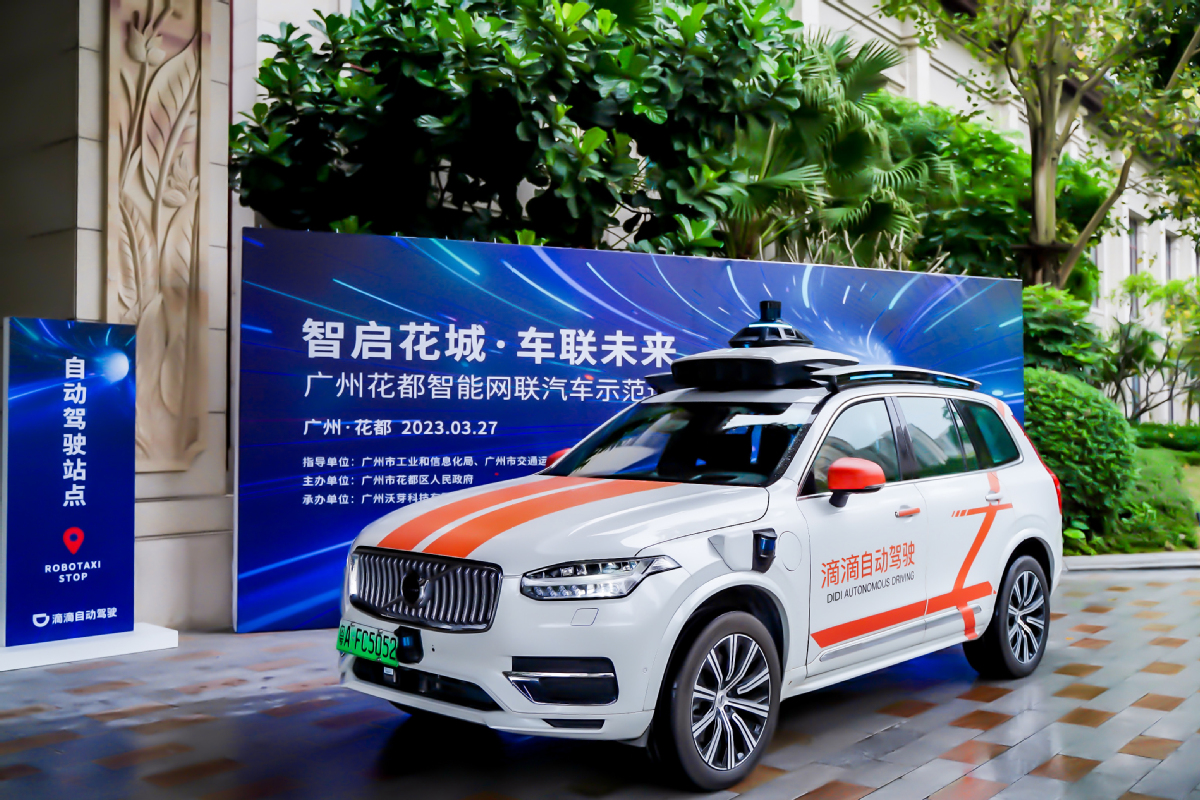
Chinese ride-hailing company Didi Chuxing launches autonomous driving services in the Huadu district of Guangzhou, Guangdong province, on Monday. [Photos provided to chinadaily.com.cn]
Chinese ride-hailing company Didi Chuxing launched autonomous driving services in the Huadu district of Guangzhou, Guangdong province, on Monday, aiming to tap the growing market.
Using WeChat mini programs to ride autonomous vehicles, people can pay based on distance and usage time, the company said.
Didi’s autonomous driving has achieved multiple levels of safety by installing around 50 high-performance sensors in its onboard and remote assistance systems, according to Li Jian, an officer in charge of the company’s autonomous driving business.
“The autonomous driving vehicles can identify traffic signs and lights 300 meters away by designing laser radars, cameras and radar configurations for long, medium and short range,” Li said.
Didi’s autonomous driving services has covered office buildings, star hotels, scenic spots, schools, shopping centers and residential areas in Huadu, which has already established a relatively complete road-testing network for intelligent connected vehicles.
“We will continue to invest in Huadu and the entire urban area of Guangzhou to increase commercial operations and remote testing, further expanding our operating areas,” Li said.
The self-driving industry is expected to grow rapidly in the years ahead, with the market size of China’s self-driving taxi services surpassing 1.3 trillion yuan ($188.8 billion) by 2030, according to a report by global consultancy HIS Markit.
Chinese tech companies have been striving to advance the technology and accelerate the commercial use of autonomous vehicles. For example, Baidu Inc has announced plans to put an additional 200 fully autonomous robotaxis into operation across the country this year and build the world’s largest fully driverless ride-hailing service area.
In October, Ontime, a Chinese mobile transportation platform, launched operations using manned and autonomous vehicles in Guangzhou’s Nansha district, becoming the first travel platform in the Guangdong-Hong Kong-Macao Greater Bay Area to offer dual operation robotaxis.
